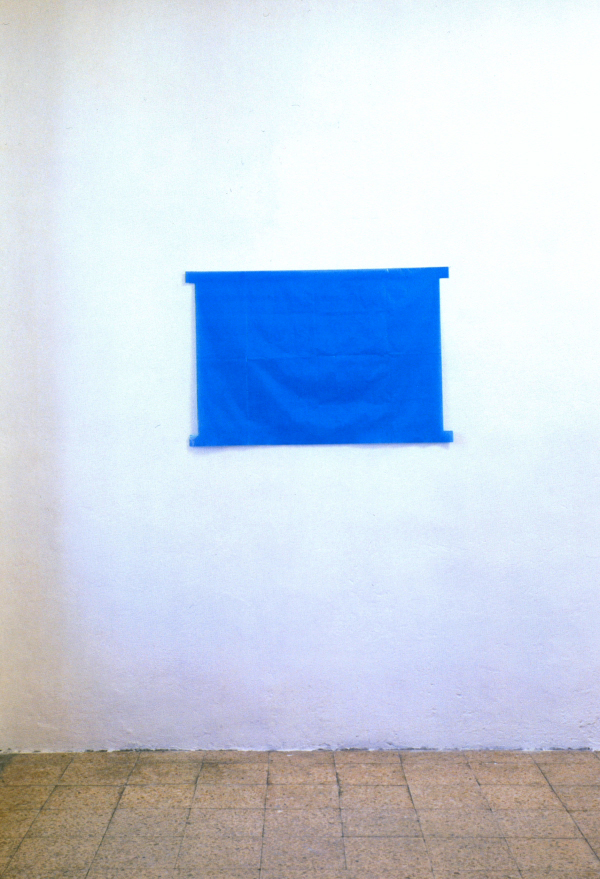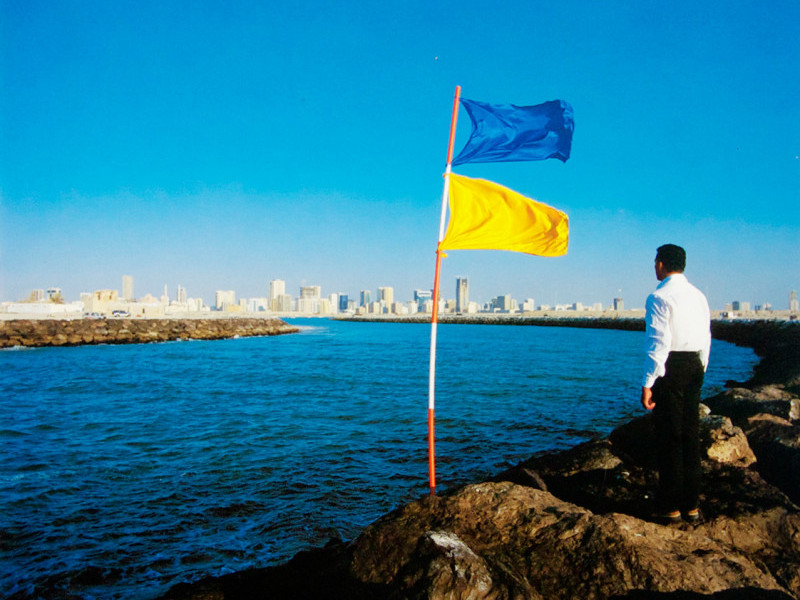
Unknown, 2002
Related Content
Unknown, 2002
Installation, Polythene, nails, and nylon thread
search


Related Content
Unknown, 2002
Installation, Polythene, nails, and nylon thread
These recent works of Scaccabarozzi, always untitled, are fabricated by cutting into ordered shapes a familiar and commonplace material, unloved but practical, whose everyday uses are banal. Polythene is industrially mass-produced, has no expressive properties, is uniform of colour and texture, having none of the craft virtues of spun textiles, no warp and weave, and no cultural history beyond that of the shopping bag and the rubbish sack. It is a purpose of art in general to reveal by transformation and of painting in particular to effect this revelation through the transformation of its materials. Scaccabarozzi, by his actions upon the material of his choice, abstracting it from utility, giving it new forms, and inserting it (as an act of artistic intention) into the visual discourse of art (and architecture), liberates the material from its quotidian uses and frees the spectator to apprehend it, both actually and metaphorically, in a new light.
There is no socio-political aspect to this act of transformation: polythene in these works is not a 'poor' material redeemed by art, poetically redolent with associations, like the sacking, iron and tar, the rags and rubbish of 'arte povera'. It is what it is and nothing else, an uncomplicated material free of association. Its revealed 'beauty' is not an inherent property or a sentimental association, but an attribute conferred on it by the aesthetic determination of the artist. Its qualities as a image-object are perceived independently of its intended utility-values, which are determined by properties other than its colour (such as thickness, strength, durability etc.) - properties of no interest to the spectator of the art object. The specific nature of the material serves Scaccabarozzi's artistic intentions perfectly.
In the first place it brings no ideological baggage; being neutral and anonymous, it lacks affective potency. Its colours are given, chemically generic, anyone being as suited to the artist's purposes as any other, for he requires of it no descriptive or evocative function. Paradoxically, this has the effect of making every colour surprising in its new manifestation, each catching, reflecting or absorbing light in slightly different ways; these are effects over which the artist has neither the power nor the desire to exercise control. His only manipulation of the material is, significantly, in the negative manoeuvre of the cut, a procedure of subtraction that creates the image-shape. Polythene is admirably fit for this purpose; it cuts easily and hangs simply from the merest thread between pins. Choosing such a material frees Scaccabarozzi from making any further decisions with regard to colour or texture. He has simply to cut and hang, the spectator is given the responsibility to create meaning, working with nothing more than material-colour and shape. (In this respect these works are categorically different from Matisse's cut-outs, where the shapes of painted paper are deployed pictorially on a canvas or mural support). Scaccabarozzi's option in the most recent works for purely orthogonal shapes, has the virtue of removing yet another complication, the dynamic agitation of the diagonal. It eliminates formal drama, possibilities of narrative. We are left with the static formality and the economy of the purely vertical and the horizontal. If these shapes remind us, as they do, of architectural forms diagrams of the jambs, reveals, sills and lintels of windows, of the uprights and intervals of fences, even of the columnar facades of temples, then it is as fleeting impressions upon the mind, no more substantial than a dream of the architectonic. They are impressions immediately contradicted by the diaphanous fragility of the object themselves, creased and folded and responding to the slightest hint of a draught, shimmering and shivering on their slight lines of thread, shot through with light. These architectural images are denied and negated by the very material of their physical realizations, a material that recalls none of the qualities of wood or stone and that provokes no solid remembrance of architectural things, The image-object - present us rather with something more rare and marvellous: the phenomenon of colour made material.
Mel Gooding
* In this essay I write of Scaccabarozzi as a painter, choosing to regard his recent work with polythene as an extension of monochromatic painting and as being perfectly consistent with the material concerns of his own earlier paintings; and bearing in mind Matisse's description of his late paper cut-outs as 'painting with scissors'. Part from the essay "MA TERIAL COLOUR" of Mel Gooding. This essay was published in a catalogue for the exhibition "Materiau:couleur" / Bordarier Scaccabarozzl Shanahan which took place in the Centre 19 C.R.A.C. Of Montbeliard France in September 2000.

Sharjah Biennial 6